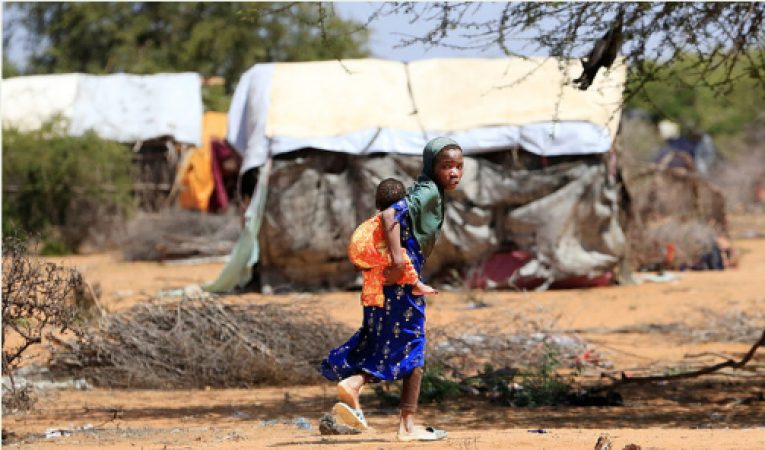
Dadaab: Dol Abdirahman Ismail left his village in Somalia and traveled three days through dust and sweltering heat to the Dadaab refugee camp across the border in Kenya after his three-month-old baby became ill from malnutrition.
Ismail, 26, said she hoped Dadaab would be free of the disease and hunger she fled to Somalia, where millions of people needed aid because of the worst drought in decades and rising food prices.
Instead, the young mother faced overcrowding, scarce resources and arid land in Dadaab, one of the world's largest refugee camps with a population of 300,000.
Also Read: Jill Biden: Joe Biden does intend to run for president once more
Ismail said that her child's condition had not improved since he was admitted to the Dadaab ward for severely malnourished children. The child's head was filled with fluid due to severe malnutrition, which is a common result of malnutrition in children.
Ismail caressed the child in his arms and said, "There is no improvement.
Parts of Somalia are on the brink of famine after five consecutive rainy seasons failed, and the rest of the country isn't doing much better. According to the United Nations, one million Somalis have been displaced by the drought in the past two years, and about 100,000 have fled to Kenya.
At least 6,000 Somalis have fled hunger in Dadaab alone since the beginning of the year, according to UN figures, but aid workers estimate the real number to be five times higher as they have yet to communicate with the UN system. Registration is not done.
Also Read: Biden urges Americans to fully understand Black history as some Republicans push for restrictions
Those who flee frequently bring little respite to neighboring countries, which are already struggling under the burden of an influx of new refugees, while also suffering the Horn of Africa's worst drought in more than 40 years .
"The new arrivals strain the already meager resources available to the population here," according to Dr. Marvin Ngao, chief medical officer of the International Rescue Committee, an aid organization that manages health facilities in Dadaab.
Dadaab is a large, dusty area filled with shops, busy streets and makeshift houses made of UN white tarps. Somalis started migrating to the country as soon as their country descended into civil war in 1991.
Since it can take weeks or months before they begin to receive their rations, many new arrivals rely on extended family networks to share their meager rations in the camp.
Long-term camp residents are therefore also at risk of starvation due to this, as well as rising food costs and poor farming and grazing conditions caused by drought. Ngao said 32 children in the area of the camp run by the IRC had died of malnutrition last year.
Only half of the $11.1 million needed for the UN refugee agency's work in northern Kenya, according to the agency.
Also Read: Origins of the coronavirus are still unknown 3 years after the pandemic
Overcrowding is also leading to the spread of infectious diseases like cholera. According to the IRC, hundreds of cases have been reported since October.
Nevertheless, Dadaab is seeing a large influx of Somali immigrants every day. By the end of the year, the United Nations estimates there could be around 90,000 new arrivals.
Farmer Dahir Suleiman Ali, 68, has resisted pressure from his extended family to leave Somalia for the past two years, but when a nearby river dried up late last year, he was left with no choice but to follow .